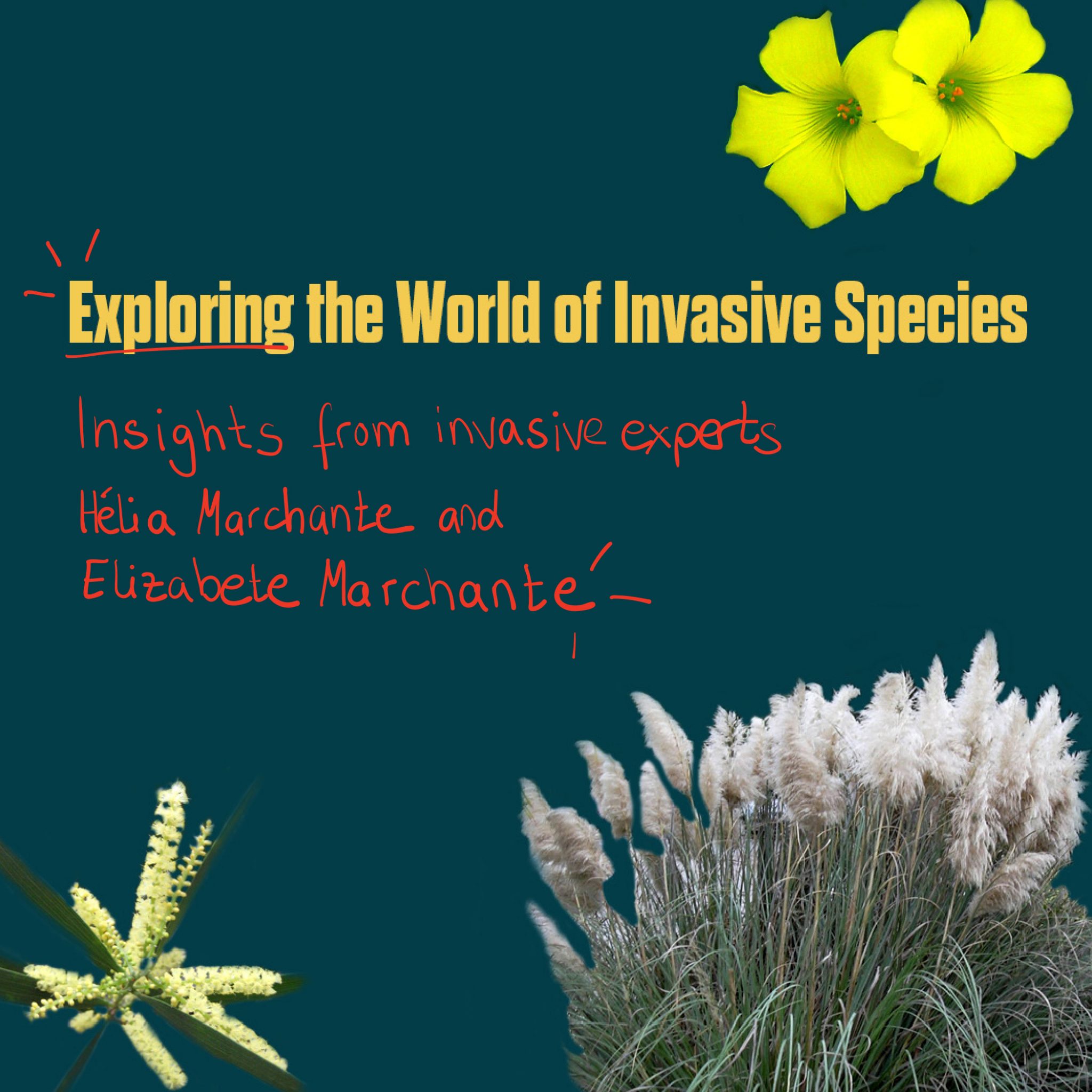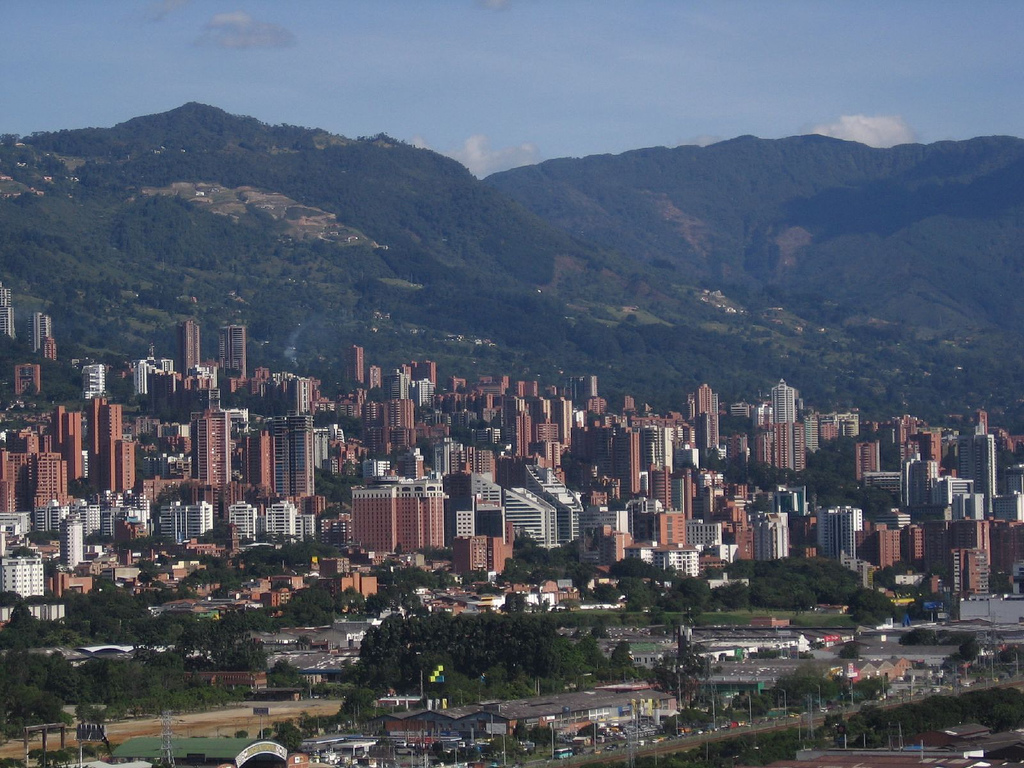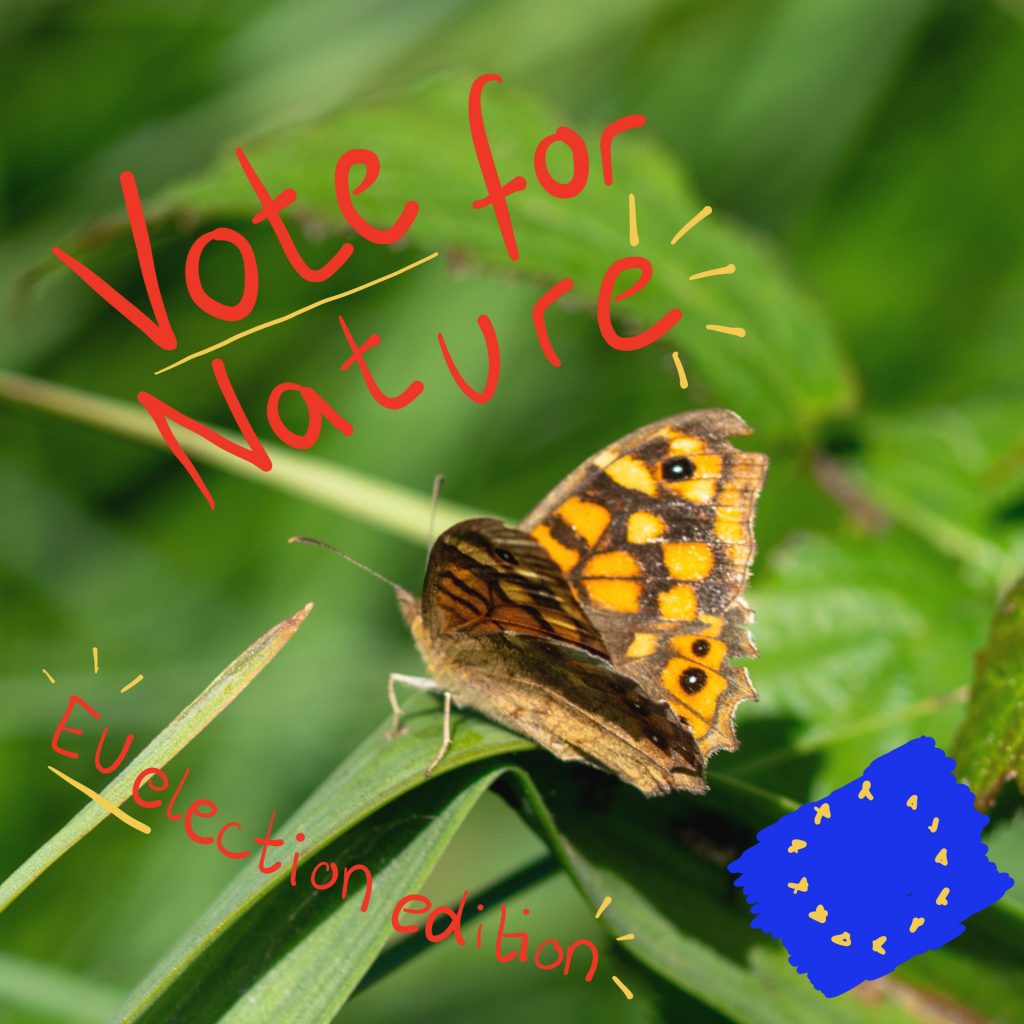To get a better understanding of invasive species and rewilding, Sylvester already delved into the topic, exploring the differences between invasive, non-native, and native species in a blog post, which you can find here. In this interview, we discuss the challenges posed by invasive species, national-scale management strategies, and practical tips for combating invasive plants in backyard gardens or rewilding projects with Hélia Marchante and Elizabete Marchante.
Hélia is a biologist, teacher, and researcher, specialised in botany, plant conservation, and invasive species management at the Escola Superior Agrária de Coimbra. Recently, she joined CERNAS (research centre for natural resources, environment and society) as a researcher, focusing on invasive species.
Elizabete, also a researcher, works in the Department of Life Sciences at the Center for Functional Ecology, University of Coimbra. She has extensive experience in invasive plant management, including biological control, impact assessment, restoration, citizen science, and public awareness campaigns.
Both Hélia and Elizabete collaborate with various stakeholders involved in invasive species management. They are also involved in the citizen science project invasoras.pt, a website that aims to raise awareness about biological invasions, draw attention to the different invasive plants in Portugal and stimulate public participation in the mapping of invasive plant species, control of plant populations and education. The site has a collection of profiles of invasive plant species in Portugal and provides useful tools and information for managers, scientific community members and anyone interested in the topic.
Let’s dive in!
Sylvester: Could you give us a brief definition, what are invasive species?
Hélia: Yes. I normally say that for a species to be considered invasive, it has to fulfil five steps. The first one is to be exotic, to have come from abroad. The second one is to reproduce by itself without human intervention. The third one is to spread, to be able to grow in the territory and increase the distribution. But species that fulfil these three steps are not yet considered invasives. If they reach high densities with many individuals in an area, then they are very close to being considered invasive. And this fourth step usually comes with a fifth and that is creating a negative impact and damaging the biodiversity, human infrastructure, public health, the impacts can be very diverse. And then a species is considered invasive.
Sylvester: So if invasive species come from abroad how and why do they get here?
Elizabete: Yeah. So, I would say a big part of the plants that are nowadays invasive in Portugal, but also in many other countries, were introduced on purpose. They were introduced for some particular purpose, like forestry, food or ornamentals in gardens, and then they spread from these places where they were initially planted or sown. But there are also invasive species, either plants, animals or other organisms that came without purpose. They were mixed with soils, with food, seeds or other products, and they reached new places, unintentionally. This happens more with animals, with insects and small organisms that easily hide in some place. But plants are mainly introduced on purpose. Like in the cases of acacia that are blooming everywhere now. Most of them were introduced to prevent erosion, to stabilise sand, for forestry or for ornamental purposes. So they were brought here on purpose. But then they started to spread and after a disturbance like fire, they spread a lot. Nowadays they are in many places where they are not welcome because they are reducing the use of these areas or are reducing biodiversity and have other negative effects.
Sylvester: You mentioned that the problem of invasives sometimes becomes only apparent after there was some natural disturbance, for example, fire. Could you explain this effect in a bit more detail?
Elizabete: Yes. It is quite variable from species to species. You have some species that were quiet for a long time and then because of some stimulus, they start to spread. Like in the case of acacia species, for example, fire is a big stimulus. For instance, “acácia-de-espigas (Acacia longifolia) was planted all along the coastline of Portugal. And many of them stayed there relatively quiet for a long time. But then after fires or disturbances, they start to spread and increase. And nowadays they are not used anymore, or at least not in the same way they were in the past, but they are still spreading and are kind of out of control so to say.
Sylvester: That is very concerning and as you said the invasive species are still spreading. Could you give us a brief overview on what the situation is like currently in Portugal?
Elizabete: We feel that people are not aware. Okay a few people are. People that are interested in the environment and in natural areas. But if you talk with someone that is not interested in that, I don’t think they are aware of the problem. So in Portugal we have a few species that are very widespread. There are the acacias. Most of them came from Australia, so they wouldn’t reach Portugal by themselves. They were introduced on purpose, many of them in the 19th century and the early 20th century and then they started to spread. We have different species in different regions. Another one is pampas grass. And that is one of the species that, like 20 years ago, was not very widespread. It was in gardens quietly and then it started to spread a lot very fast. And that was because this plant is gynodioecious, it’s a strange word but it means that in different plants you have hermaphrodite plants and feminine plants. And in this case the feminine plants were more used in the ornamental market and planted around. They were mainly quiet because if you don’t have the hermaphrodite around to give the pollen they don’t reproduce. But then some hermaphrodites were introduced and they started to reproduce and spread very fast because they have these tiny seeds that are spread by wind. So they just blow away. Then you have several species, inside the water, aquatic ones. We have many aquatic invasives actually.
And then we do have several species that are not widespread, but they’ve been introduced in recent years. They are very aggressive and they grow very, very fast. And we have many more, these are just a few examples. So the picture of the country is not very Nice.
Sylvester: Are there any rules or regulations for the spread of invasives?
I mean, we have had legislation since 1999. It’s one of the oldest legislations on invasive species in Europe. And now we have a new legislation from 2019 and in there we have more than 100 species of plants listed as invasive. So we have a huge list. Of course, not all of them are widespread. But we do have many species that are very impactful and have very negative effects.
Sylvester: So how would you control invasives then? Is there a strategy or plan to tackle them?
Elizabete: Our legislation says that for the species that are listed as invasive a plan for actions to control them should be made. We do have some plans that are on their way, but there are very few plans that are already starting to be implemented. So this is the more strategic approach and we hope in a few years that we have plants and that those plans can be the orientation for the management and control of the invasive species. I hope that these plans are a better orientation for people to do the right thing. But apart from that in the global context for legislation we hope this can be useful for global management in the future. But nowadays, those things don’t exist. So there are many entities and people that are controlling species, but with their own strategies and plans and projects. I know quite a few, some are very good projects that managed to control the invasive species, they did not eradicate or eliminate them, but they keep them in a very low quantity in a way that they are not so damaging. But there are many projects and a lot of money being invested in the control of invasive plants that I would say are not very successful. Most of the projects have not so good results and you see a lot of money being spent to control species without persistence and continuity.
Sylvester: Wow that’s quite a frustrating conclusion. So what’s the main issue with those projects that are not working well, is it the continuity?
Elizabete: Yeah. If you think in the case of acacia they have seeds that are viable for more than 20 years. So they are just there waiting for the fire or disturbances to help them germinate. And apart from that, if you cut them, most of the acacias will just resprout a lot. So if you don’t do anything after the first intervention, they will come back very very easily. So I think one of the key points is that if you start to control, you need to be aware that you need to continue for a long time. Yeah. Of course, it depends on the species and the context that you have, but you don’t control an invasive species with a two year project. I wouldn’t say it’s impossible, but it’s very not likely.
Sylvester: And if you in spite of the long process want to start fighting invasives, what could you as an individual do if you, for example, have a backyard or just notice there’s lots of invasives around? Like how would you go about tackling them?
Elizabete: The first thing is not to use them. So learn to recognise the invasive species and don’t use them. That’s the first step because I know people that just use the invasive species because they are not aware. And so they can keep spreading them and you have all these invasives.
But if you already have invasives, the first thing I would say is start with the easy ones, and the ones that are not very much widespread. If you have just one invasive individual in your garden, just remove it. You have to uproot it because if you don’t get the root they sprout again. And then of course you have to adjust to the species characteristics. I think a key point is to start with the isolated ones, if you don’t control them, while it is easy, they will, with time, reproduce and start to invade more areas and then it will be much more difficult to control them. Depending on the invaded areas you can use methods that are more effective than just cutting. For acacias, for example, If you cut them, most of the species will resprout.
So if you have a small area of acacia and you have some time or money you can debark them. It requires some time and patience but then you can have much better results than if you just cut them. You can cut them very easily and very fast, but they will come back even if you put some herbicide after the cut. And in some areas you shouldn’t use herbicides. So you should reduce the use as much as you can.
But I don’t like to give recipes to everyone because depending on the context and of the species, you do different things. But in general I would say herbicides are the last option. And for most of the species you have to know them well. What are their ways of reproducing and spreading? So then when you try to control them, you can tackle those characteristics. And then you have to keep in mind that even if you uproot them or you cut them and then you remove the sprouts five times they might not resprout again. But they still have the seeds and they are there in the soil. So if you disturb the soil or if you have a fire, they will come back even when you don’t see them. And if you have a species that has very tiny seeds that are spread by wind, you have to be aware that even if you control them at one place, they can be somewhere else and you have to search for them.
So, I think the most sensible approach is to know your enemy very well and if you persist you will get good results in most cases.
Something people do that it’s very useful, maybe not so much for the person itself, but for management and for science, is to report the places where they see invasive species. This can be done using a citizen science app like iNaturalist or BioDiversity4All. Then you know the location of the invasive species and when some entity starts to implement some control plan, it’s very useful to know where the species are. So if you have data, then it’s easier not only for management but also for research because for modelling and to plan and to know how we expect them to behave, we need to know the places where they are. You can also participate in activities that are organised for volunteers. We do a lot of courses and talks and volunteer activities. Many things that we do are to raise awareness and to engage people with these subjects. For example there is the Invasive species awareness week in Portugal and Spain from the 4th to the 12th of May. It’s a week full of activities around the topic of invasive species to make people aware of the issue and to encourage action.
Sylvester: This is really good to know we will note that down in our schedules and make sure there will be some action and awareness raising around invasives that week! We think this is also a nice closing point for our interview so thank you for taking the time and the nice talk about invasive species, the situation here in Portugal and how to tackle them.






